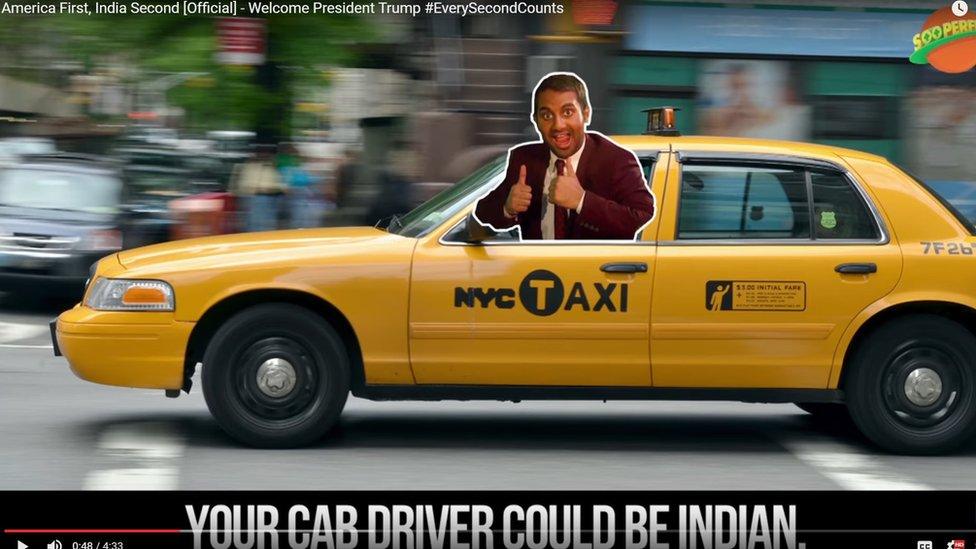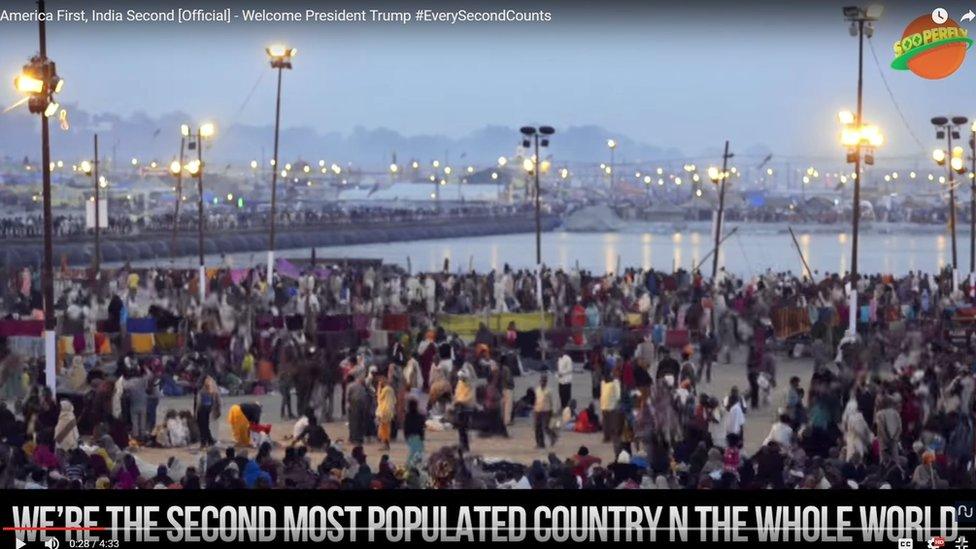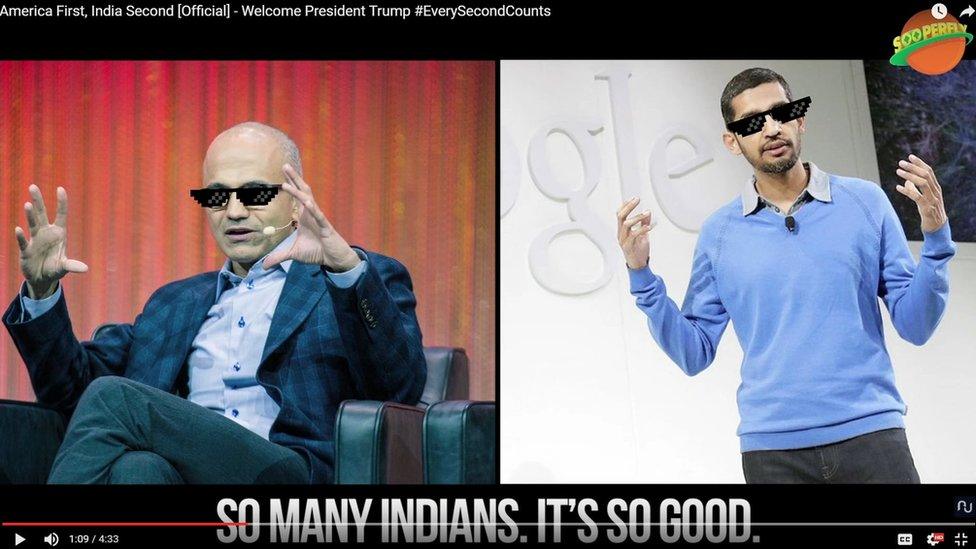Viral video makes case for 'US first, India second'
- Published

India is the latest country vying to be "second" after US President Donald Trump vowed to put America First.
A "Valentine's Day message", external to Mr Trump created by Mumbai company Sooperfly makes a "strong" case for the country.
India, it argues, is "amazing at being second", proved by the fact that it has the world's second largest population.
"We wanted to do an India video ever since we saw the Dutch appeal to Mr Trump," Roopak Saluja, Founder and CEO of Sooperfly, external, told the BBC.
The video, which was uploaded on 14 February, has received a little over 300,000 views on YouTube, but has received much more traction on Facebook, Mr Saluja said.
A post by Sooperfly was shared more than 1,100 times while a Mashable article, external about the video quickly went viral, with over 41,000 shares all over the world.
The Netherlands was in fact, the first country to ask the US for "second place" status in a video which was swiftly followed by similar appeals from a slew of European countries including Switzerland, Denmark, Germany and Belgium.

All the videos follow a similar format, in that they are narrated in a "Trump" voice and use similar vocabulary to the US president.
Denmark for instance, talks about its "tremendous" pastry, while The Netherlands promises a "great" video that is going to be "fantastic".
The Indian video begins by dismissing all the "terrible videos, bad videos" from other countries around the world asking to be second, before presenting India's credentials.
'America First'. Who will be second?
These include, but are not limited to the fact that India "almost has the best pollution in the world", that Silicon Valley is pretty much Indian, and the "large, shapely, perky dome" of the Taj Mahal.
"The impact of these videos hinges on the voice, and we were very clear that we did not want to do a video unless we got the right voice," Mr Saluja said.

"Almost serendipitously I read an article the very next day about two voiceover artists who were in high demand for their Trump impersonations, so we moved quickly to get in touch with them."
A team of about 10 people worked for three days on the video, fine-tuning the script and finding the footage to go with the narrative.
"Finding a balance is always tough, because funny can so quickly cross the line into offensive. We wanted a video that people would share without inhibition or feeling squeamish," said Mr Saluja.
"Given the range of people who have told us how much they loved it, I think we have managed to do that".